14 Foods You Might Not Realize Taste Better With Paprika
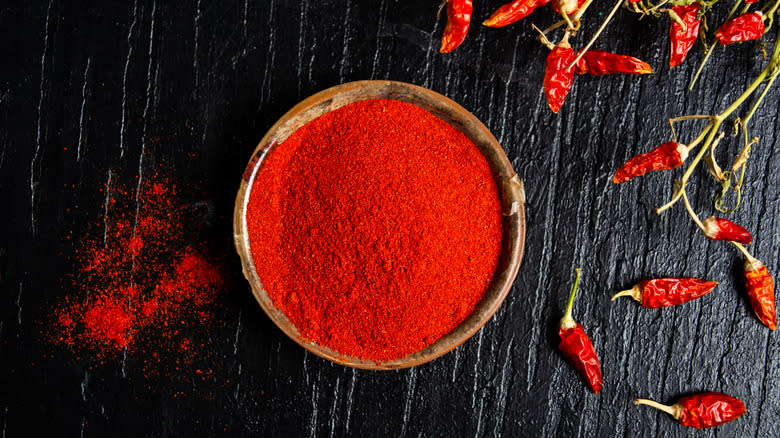
Derived from various dried and ground peppers belonging to the Capsicum annuum family, paprika has become a staple ingredient in kitchens around the world. This spice, made by meticulously drying and grinding red peppers, is far from mundane. Among the peppers used in this powdered spice are poblano, hot chili peppers, red bell, cayenne, sweet peppers, and others. Because the combination of peppers used is so expansive, it can be difficult to adequately substitute another spice for paprika.
Whether you're seeking to infuse your dishes with a subtle smokiness, a gentle heat, or a burst of vivid color, paprika is versatile enough to elevate just about any dish, and some you might not even realize. If you're cooking with paprika, it's helpful to understand this spice's different kinds, which are typically categorized into three primary types: smoked, sweet, and hot paprika. From its diverse types and flavor profiles to its role in global cuisines, the uses for paprika are more underrated than you may think. Here, we will delve into the ways paprika can transform your dishes and enhance your food with a dash of spice and rich flavor.
Read more: 15 Tips For Properly Seasoning Eggs
Hummus
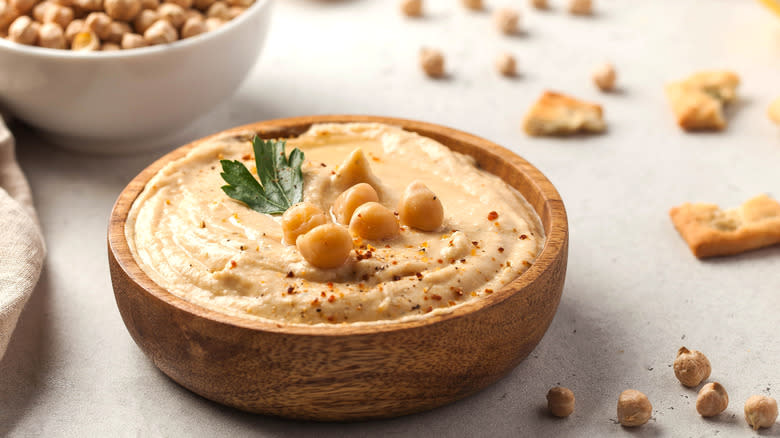
Maybe you know it, maybe you love it, or maybe it's not for you. But for those wondering what exactly hummus is, this beloved Middle Eastern dip, made primarily from chickpeas, tahini, lemon juice, salt, pepper, and garlic, is known for its creamy texture and savory blend of flavors. It serves as a blank canvas for various seasonings, and paprika happens to be one of its most complementary and transformative additions.
Paprika enhances hummus in several ways. Depending on the type of paprika used, it can give the rich hummus sweeter undertones, a smoky flavor, or a spicier kick. If you're serving the dip with pita chips, you might go with smoked paprika to elevate the subtle saltiness of the chips. For hummus served with celery or carrot sticks, you might lean towards a hot paprika that pairs nicely with the vegetables. No matter which kind you add, the earthy chickpeas and the paprika's nuanced, peppery flavors come together in a perfect balance. Aside from the complexity and warmth it brings, the red spice also gives a burst of vibrant color to an otherwise beige dip.
Fried Eggs

If you haven't thought of it yet, there's a big reason you should use paprika to season fried eggs: The peppery flavor deliciously intensifies their mild flavor. Whether you sprinkle it on top or add it to the oil to infuse more flavor, paprika is a tasty choice for this breakfast food. When you incorporate it into the oil, the spice enhances both the oil and eggs, creating more layers in the flavor. It helps that paprika is so versatile. It pairs well with a variety of other seasonings and ingredients commonly used with fried eggs, such as salt, pepper, herbs, or cheese.
Sweet paprika is excellent for creating balance with other sharper spices you might add to eggs, like ground pepper or garlic. On the other hand, hotter kinds of paprika will bring heat that complements the rich creaminess of the eggs. Most recipes will suggest using smoked paprika because it's not too intense, but any kind will work with your eggs — and not just fried eggs, but also deviled eggs, hard-boiled, scrambled, or poached.
Paella
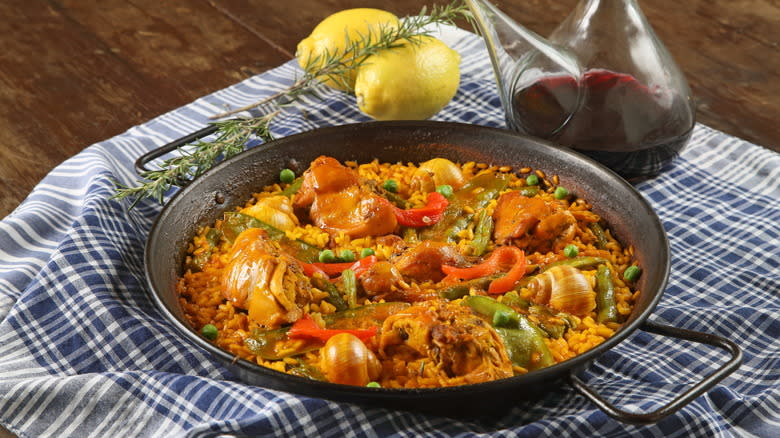
A popular Spanish recipe, paella is a vibrant rice-based dish that features a unique blend of textures and flavors. Its key ingredient is saffron-infused rice with an assortment of vegetables and aromatic spices, mixed with a variety of seafood, chicken, and even rabbit or snails. Among these spices, paprika plays an essential role in elevating this dish's many flavors. Honestly, making paella without the spice is basically unheard of. Not only does it fit with the other seasonings used, but its color provides contrast against the golden hue of the saffron, giving the food the colorful and inviting warmth it's known for.
Paprika is adaptable to different paella variations, whether it's made with seafood, meat, or vegetables. Particularly, the smoked Spanish "pimentón" pairs seamlessly with paella. It contributes an earthy depth that complements the seafood's brininess, the succulence of the meat, and the natural sweetness of the vegetables. Paprika and paella share a natural affinity, and paprika's smokiness, color, and versatility make it a vital seasoning that elevates the taste, appearance, and aroma of this iconic Spanish dish.
Macaroni And Cheese
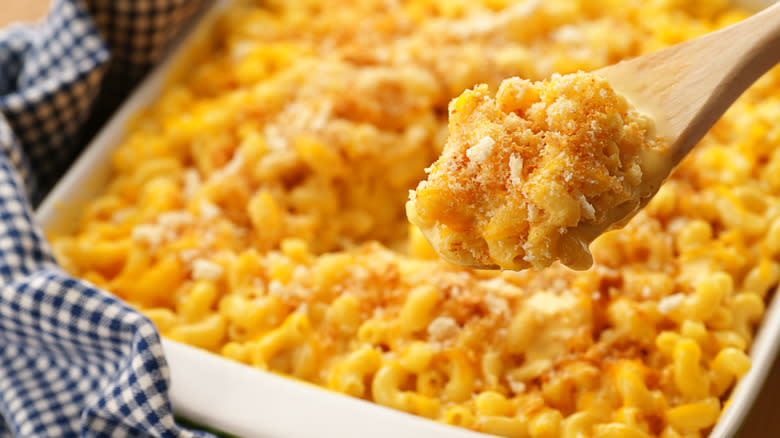
Paprika and macaroni and cheese are a winning combination for several reasons. By adding mild heat, smokiness, or slight sweetness to the creamy pasta, paprika adds layers of flavor to a dish that's 100% cheesy and rarely anything else. In any dish, seasoning is key, but macaroni is sometimes left out when it comes to elevating the classic flavors. The creaminess of macaroni and cheese can be quite indulgent, but paprika helps balance this richness by cutting through the creaminess with its subtle spiciness, preventing the dish from becoming cloying.
Any macaroni and cheese recipe would benefit from a dash of spice. If you're making mac with a Tex-Mex spin on it, it wouldn't hurt to sprinkle in some hot paprika to amp up the Mexican flavors or sweet paprika to help tone it down. For macaroni and cheese that's fit for your next cookout, try using smoked paprika to complement the other grilled or BBQ-smothered foods you serve.
Swordfish
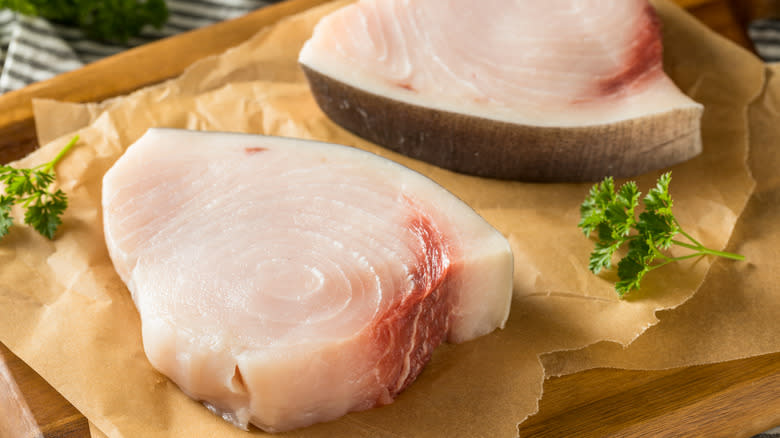
Even though it's a fish, swordfish is known for its meaty, mild, and slightly sweet flavor that isn't overly fishy at all — it's often considered the steak of the sea. When it comes to adding paprika, the spice can perfectly complement swordfish no matter which type you use. Sweet paprika will accentuate the inherent, subtle sweetness of swordfish; smoked paprika is perfect for coating or blackening; and hot paprika can provide balance with the buttery texture of swordfish and cut through the mild, rich flavor.
Moreover, paprika's flexibility allows for experimentation in preparing swordfish. Whether you're grilling, pan-searing, or baking the fish, paprika can be incorporated into marinades, rubs, or sauces to infuse flavor. Plus, it's an ideal spice to combine with other seasonings in a mix, like cayenne pepper, black pepper, garlic powder, and onion powder. Paprika can, and should, easily become a go-to spice for customizing and elevating the unique flavor of swordfish.
Chickpeas
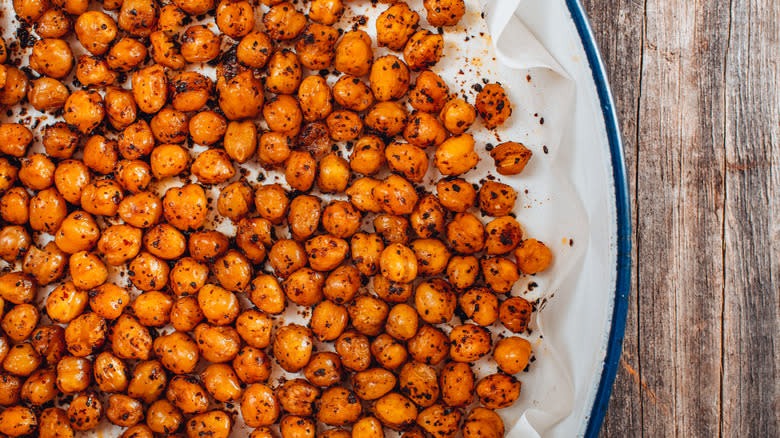
Just as paprika is delicious when added to hummus, it works just as well as a seasoning for chickpeas, the base of the dip. When eaten alone, chickpeas (or garbanzo beans) are nutty, tender, and highly nutritious. Surprisingly, paprika is packed with nutrients, too. Besides containing antioxidants, it also has vitamins B6, A, and E, as well as iron. Whether you're making hummus, roasted chickpeas, air-fryer chickpeas, or a chickpea stew, paprika can amplify the overall taste.
Chickpeas often go in dishes with a range of flavors, from mild to spicy, and paprika's versatility allows it to adapt to various preparations. Sweet paprika can balance the spiciness of chickpea curry, while smoked paprika can elevate chickpea-based soups like this gluten-free gazpacho and crispy chickpeas dish. When paprika is used with roasted or fried chickpeas, the spice can help them reach the desired crispiness. Additionally, paprika exudes a peppery, smoky aroma, which alone can take rich and hearty chickpeas to a new level.
Cauliflower
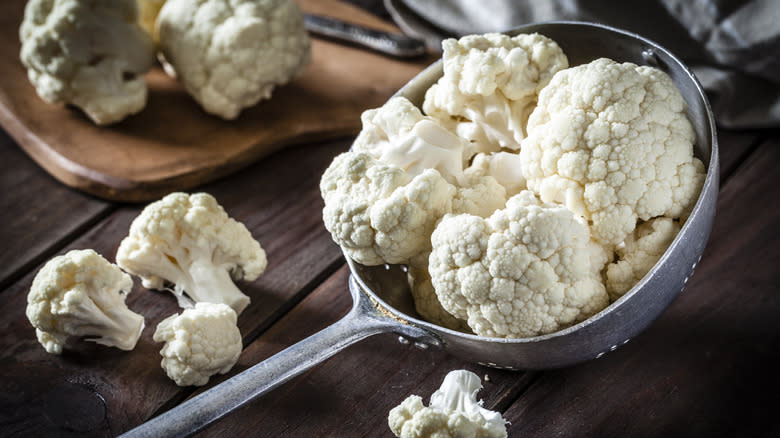
Despite its plain, mild flavor, cauliflower has the ability to absorb the flavors of any seasonings and spices it's paired with. This makes paprika a perfect spice for this versatile cruciferous vegetable. Sometimes, it's a challenge to make cauliflower actually taste good, but its neutral, earthy taste is a perfect canvas for paprika. Since both are so adaptable, seasonings like paprika or other peppery blends can give the vegetable some real complexity.
Either sweet or hot paprika can elevate a blend for a spice-roasted cauliflower, while smoked paprika can add depth to cauliflower steaks or roasted cauliflower. Recipes like this tomato cauliflower soup could be even tastier with a dash of sweet paprika, which can bring out the natural flavor of the tomatoes. Even more basic recipes, like cauliflower rice or a pizza crust, can benefit from the inclusion of the spice, simply because paprika's pepperiness adds character. When roasting or grilling the vegetable, incorporating some paprika can produce a crispy exterior and sharp aroma.
Eggplant
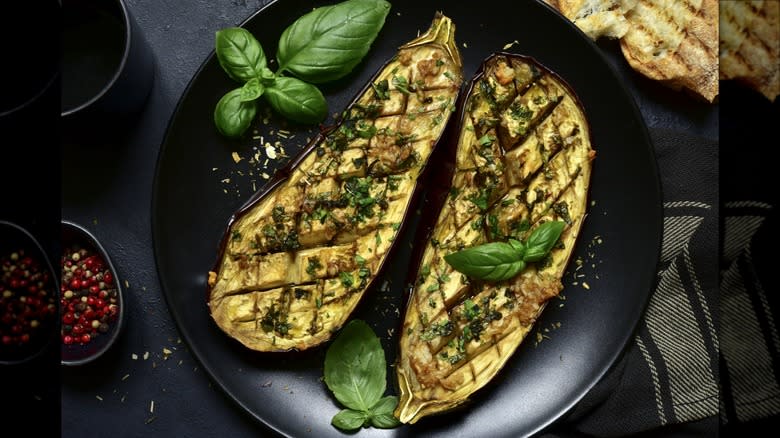
Before eggplant is roasted, it has a mild taste, not unlike zucchini or squash, but after some time in the oven, it becomes tender, smoky, and somewhat sweet. When combined with paprika, the spice naturally brings out more of these flavors while adding its own to the food. Depending on the type of paprika used, you can infuse roasted eggplant with distinct cultural flavors. In a Mediterranean-inspired eggplant dish, sweet paprika can balance out any spiciness. Sweet paprika can also complement the tomato-y flavors in a traditional baked eggplant Parmigiano. Then there's smoked paprika, which is a natural choice for recipes like baba ganoush, where it imparts a smokiness reminiscent of Middle Eastern cuisine.
Eggplant marries well with other seasonings too, and paprika can easily join the party of other aromatic spices and herbs like rosemary, thyme, garlic, cayenne, cumin, and chili flakes. Paprika is perfect for when you're grilling, roasting, marinating, or using a rub on eggplant.
Greek Yogurt
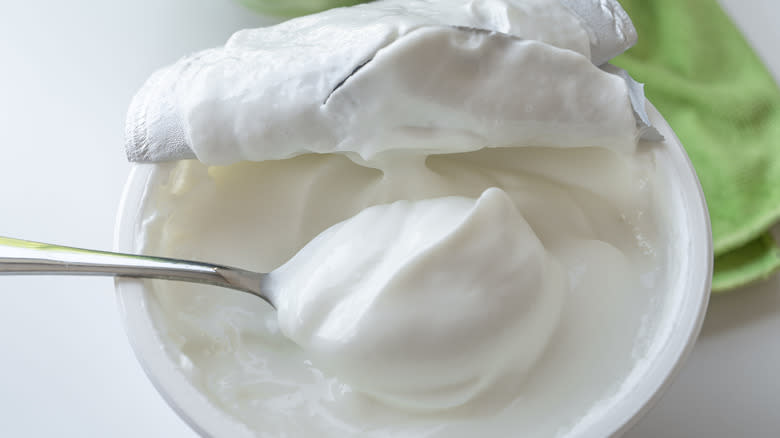
Paprika is definitely a great way to level up plain yogurt. Greek yogurt, which is naturally tangy and creamy, is a base for several sauces, dips, and marinades. Add in paprika, and this dynamic duo can elevate a wide range of dishes. For example, any kind of paprika could heighten the spices in a classic chicken tikka masala. A sweeter paprika could counteract the heat, a hot paprika could enhance that heat, and a smoked paprika could just add another layer of spice. With tzatziki, which relies on Greek yogurt, paprika can create more dimension in the tart, citrusy sauce.
Plus, Greek yogurt is packed with protein while paprika adds antioxidants and a hint of spiciness to the mix. Together, they contribute to a healthier and more flavorful dish. Their compatibility, versatility, and nutritional benefits make them a dynamic duo for enhancing flavor and visual appeal. After all, Greek yogurt is somewhat plain in color and taste, and paprika can help it with both.
Hot Chocolate

While it may not be an ingredient you often find in hot chocolate, paprika can certainly spice up the beverage. Mexican hot chocolate is a breakfast must-have during holidays like Día de los Muertos, and while it usually calls for chili powder and cinnamon to get its distinctive flavor, paprika is another great way to add heat. In particular, smoked paprika can blend with the warming qualities of the cinnamon and create a more robust taste.
Hot chocolate, which is rich, sweet, and creamy, is rounded off with the smokiness and spiciness of paprika. Even sweet paprika can add depth to the drink, despite already being decadent. Kind of like adding a pinch of salt to counteract the sweetness of chocolate, a dash of paprika can provide balance in its own way. No matter what other ingredients you like to put in your hot cocoa, from marshmallows to pumpkin spice, it can surely benefit from a little heat.
Tofu
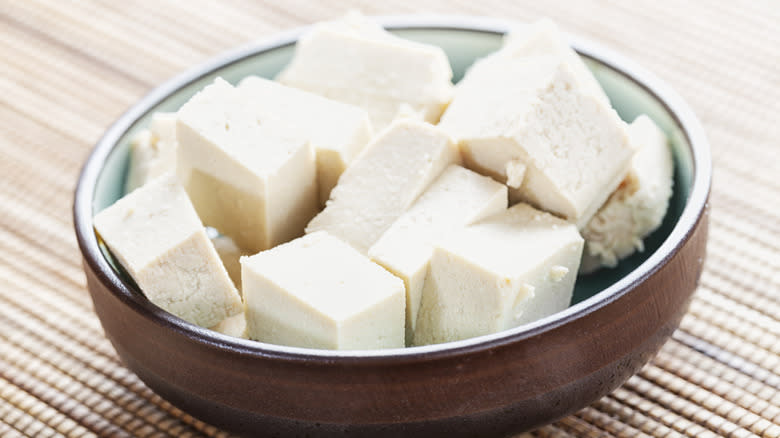
Tofu is used in a diverse array of dishes, from stir-fries and curries to scrambles and sandwiches. Paprika's adaptability allows it to fit right in with various cuisines, making it an ideal spice to use when cooking with tofu. For a touch of sweetness to intensify tofu's mild flavor, try sweet paprika; and to make your plain tofu more complex and appealing, try smoked paprika. Since both ingredients can be used in a myriad of dishes, it's worth taking a little time to experiment. We recommend a recipe that uniquely incorporates both, like mussels and tofu in a sweet smoked paprika sauce.
Additionally, paprika can contribute to the texture of tofu. When used in marinades, rubs, or coatings, the spice can create a flavorful crust or coating that adds a pleasing crunch to tofu, which is otherwise pretty soft and somewhat damp. Plain tofu isn't exactly anything to marvel over, but it is very nutritious — it's rather high in calcium, manganese, and copper, with a fair amount of selenium. Paired with paprika, your dish can be even more healthful, as well as being entirely more flavorful.
Cornbread
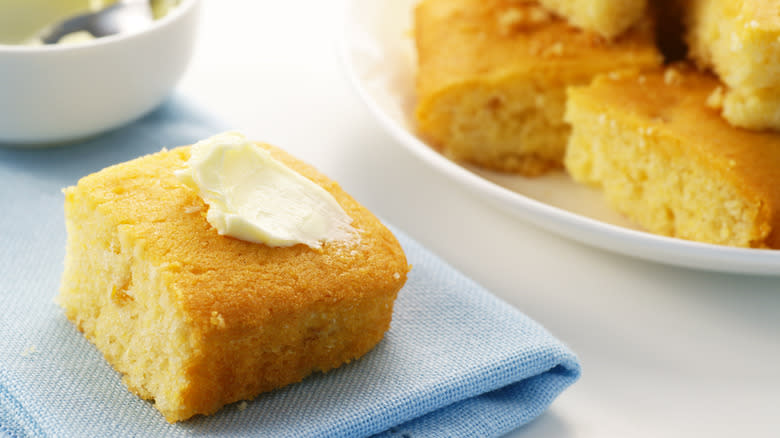
A traditional Southern staple, cornbread is typically one-note. Seeing as how it's made primarily of cornmeal, milk, and butter, it's not entirely surprising that it tastes significantly of corn. Adding an element like paprika can give the somewhat bland bread a tasty kick without overpowering it. In fact, paprika is a simple way to give cornbread more flavor alongside other mix-ins like bacon, cheeses, or herbs like basil, oregano, and rosemary.
You can risk getting creative with a blank canvas like cornbread — simply go with the kind of paprika that aligns with your taste preferences and the overall theme of your meal. If you're serving it with baked beans, go for smoked paprika to highlight those flavors. For cornbread with chili, either sweet or hot paprika can bring the desired heat to match the meal. Some like to spice up their cornbread with jalapeños, and if you're one of those people, try adding sweeter paprika to create more layers with that heat.
Salsa
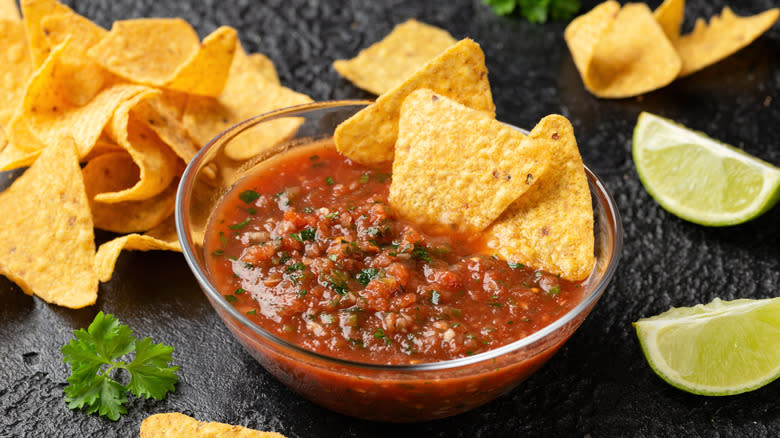
Almost any kind of salsa relies on some sort of spice, be it from hot peppers or seasonings, and paprika is the perfect addition. Whether you're making a classic tomato salsa, a fruity salsa, or a savory salsa with black beans and corn, paprika can be tailored to suit the specific flavor profile you desire. It complements the natural sweetness of ripe tomatoes and can balance the acidity of ingredients like lime or vinegar.
It helps to think about how you're serving the salsa. If you're pairing it with grilled meats or seafood, you might consider smoked paprika to match the smoky taste of the grill. For salsa to go on tacos or with tortilla chips, any kind of paprika would suffice. Just as it should be when making salsa, it comes down to creativity and culinary experimentation. We think the same can apply to jarred salsa too — add some paprika to your favorite store-bought brands if you think it makes sense!
Popcorn
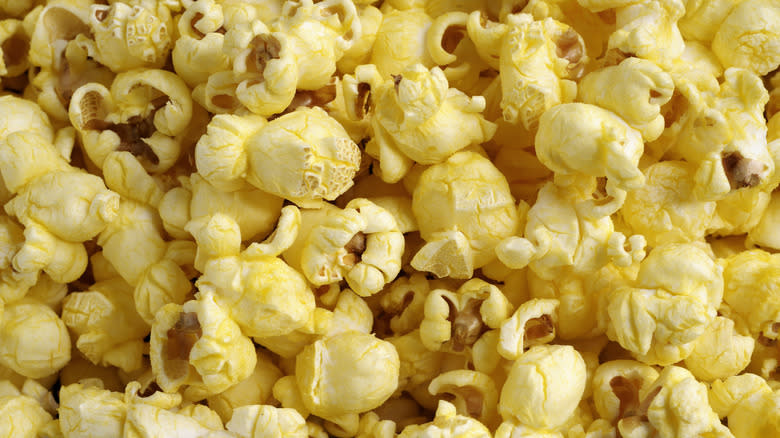
Yes, we know, popcorn traditionally requires salt and butter, and maybe extra of the latter. But paprika is also a great way to raise the plain snack to another level. For some heat, sprinkle some hot paprika. Sweeter popcorn, like kettle corn, might also benefit from some heat or smoked paprika. What's more, because paprika is so compatible with other seasonings, you can get creative by mixing it with things like garlic powder, onion powder, or grated Parmesan cheese. These combinations can add depth, richness, and a burst of flavor that could elevate your popcorn to gourmet status.
Because paprika is powdered, it disperses evenly over popcorn, giving it a nice texture that doesn't result in clumpy or gritty bites. Honestly, we won't even judge you if you tote some paprika with you to the movie theater to add to your bucket. Depending on which type of paprika you prefer — there are no wrong answers here — the smokiness, sweetness, or spiciness can make your popcorn more than just a simple, buttery treat.
Read the original article on Daily Meal.

 Yahoo Movies
Yahoo Movies 
